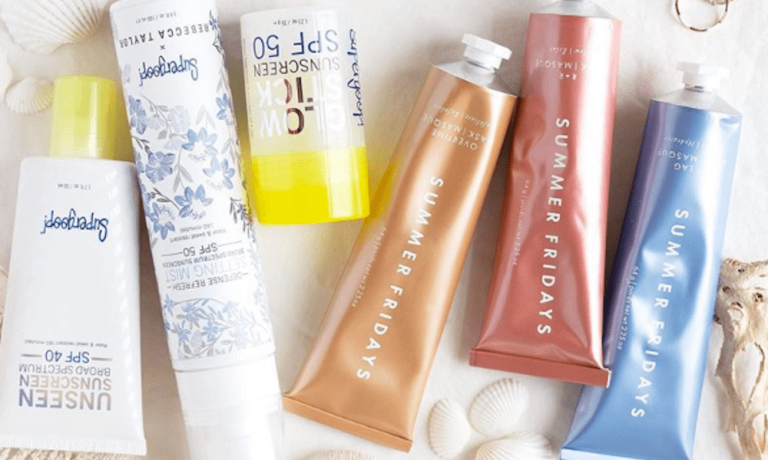
One might assume the hardest part of building a product to disrupt the traditional sunscreen industry would be actually formulating a new brand of sunscreen. Particularly if one’s goal is to make it free of oxybenzone and parabens — two of the more common preservatives in consumer cosmetics, though both products with a history of health controversies attached to them.
And Supergoop Founder Holly Thaggard can certainly attest that building a better sunscreen was challenging — especially because she isn’t an industrial chemist. Thaggard was a schoolteacher who was inspired by a close friend’s diagnosis with skin cancer to dig a little deeper into why skin cancer had become America’s leading form of cancer.
What she found, she said, is that one of the primary reasons is that people don’t wear sunscreen nearly as often as they should, because the product in its typical form leaves a lot to be desired.
“Traditional sunscreens are sticky, tacky, smelly, and just no fun to wear,” Thaggard said. And though she didn’t know herself how to formulate a new, better edition of sunscreen, she was able (with the help of a dermatologist friend) to connect with chemists and develop a new product in a lab. The eventual product that went to market — Supergoop — grew from Thaggard’s early names for the product samples she was always looking at: goop.
The product formulation wasn’t easy, but it was manageable and foreseeable challenge. What ended up being much harder for Supergoop was realizing the first draft of its business plan on distribution for its new take on sunscreen was going to have to be scrapped and nearly entirely rewritten.
A teacher when she first founded her firm, Thaggard had observed that despite the fact that schools send kids out into the sun several times during a day, they do not put sunblock on them, or make it available. The original plan for Supergoop was to use schools as its customer and distribution network — making it easy to set up dispensers around buildings so kids could keep themselves protected.
The problem, it turned out, was that in 2007 when this project was first lifting off the ground, regulations in most states made this model basically illegal. Sunscreen, much to Thaggard’s surprise, was viewed as an over-the-counter drug in most states in 2007, meaning children couldn’t self administer it in a public school. Private schools had somewhat more flexibility, but not enough scale to get the project launched.
“I had a big failed business model from the start,” she told Forbes.
That lead to the firm’s first big pivot — away from a school-based distribution chain and toward a more traditional wholesale model. That, Thaggard said, in turn involved a lot of bootstrapping into relationships with mom and pop shops through relationships formed at trade shows, and eventually some high-wire negotiating with Nordstrom leveraging a deal with Sephora that was in the works, but perhaps not as final as she had made it out to be.
The gambit worked, and eventually the Supergoop product ended up on shelves at both shops — and the firm’s annual sales picked up. Enough, in fact, that it propelled the firm’s second big pivot — bringing in Dior retail strategy veteran Amanda Baldwin to run the operations of the company as president. This, Thaggard noted, had not been in her original plan, but at the suggestion of investor John Kenney, founder of JMK Consumer Growth Partners, she came around to the wisdom of that position.
“What makes founders so great as entrepreneurs only very rarely makes them the best person to run a business once it gets into the tens of millions of dollars,” Kenney told Inc. of his recommendation. “Their experience is not around process.”
With the new leadership, other changes came. Supergoop’s official headquarters moved to New York, though it still maintain offices in San Antonio where it was founded, it has expanded its retail relationships and online direct sales presence as well as its sales. In 2018, the firm brought in $40 million in revenue.
Since starting with sunscreen, the brand has expanded its product line to include powders, cosmetics, kits, washes and makeup preserving sprays. Supergoop’s clear goal is offering an entire skincare regimen based on its signature SPF protection.
There has also been speculation that the brand, as it increases in size, is likely to be bought out by one of its larger competitors looking to round out its skincare line. It is worth noting that such rumors have been circulating about the firm since 2017.
And so far, despite a few pivots, Supergoop is still there and still an independent brand.